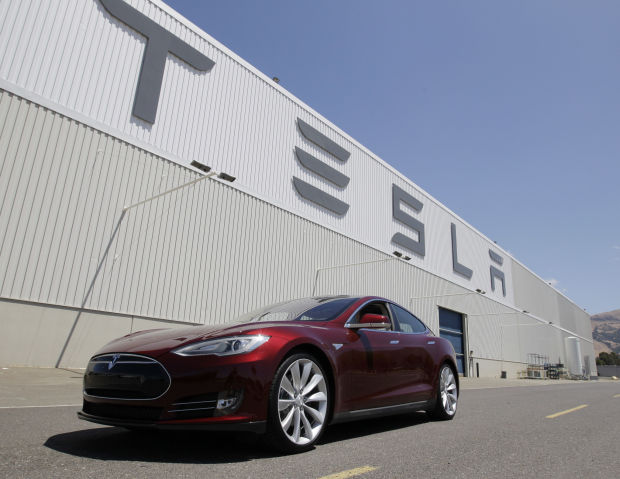

By Chelsea Harvey
Back in May, Tesla turned heads when it announced plans for a new battery product that would allow homes and large-scale commercial operations to store energy from solar panels or serve as a backup power source during grid outages.
A report released Wednesday highlights the leaps and bounds this new industry — dubbed energy storage — is already making and predicts its continued growth in the coming year.
The U.S. Energy Storage Monitor report, which is part of a series of documents published quarterly by GTM Research and the Energy Storage Association, says that energy storage deployment rose sixfold in the second quarter over first-quarter levels.
It's a big jump, says Ravi Manghani, a senior energy storage analyst with Greentech Media Research — but it's not wholly unexpected. "We're talking about an industry that's very new and recent," he says. "In that sense, we do expect some quarters to have much bigger jumps, as we are having this particular quarter." The introduction of technologies such as the Tesla battery help make these gains possible, he said.
The finding highlights a growing national interest in batteries and in energy storage generally. No wonder: The ability to store energy and distribute it at a later time could help utility companies meet their customers' electricity needs on demand, which reduces the possibility of putting too much — or too little — power on the grid on any given day.
Developing better storage technologies is also increasingly important as renewable energy sources, such as wind and solar plants, expand across the country. One of the biggest problems with renewable sources is that they can only generate power intermittently. Solar panels, for example, don't work at night, when the sun isn't shining. Expanding these resources depends on finding ways to store energy as it's generated so it can be used at a later time.
The Energy Storage Monitor reports that 40.7 megawatts of energy storage were deployed in the second quarter of this year. During the same period last year, fewer than 5 megawatts were deployed.
The report breaks down energy storage across the country into three segments: residential, which includes private homes; nonresidential, which includes commercial and industrial deployments; and utility-scale, which can involve large- or small-scale projects that store energy to the power grid.
Utility-scale deployments made up the majority of the energy storage reported for this quarter, accounting for about 87 percent of the market. According to the report, one of the major reasons for the increase is a new 31.5-megawatt energy storage project opened in Illinois by a company called Invenergy.
Residential energy storage, on the other hand, only accounted for about 1 percent of all the deployments — though it grew by 61 percent from last quarter. The new Tesla battery is partly to thank for that, Manghani says. "The behind-the-meter nonresidential and residential deployments have largely come from Tesla's systems," he says.
Even though Tesla just publicly announced its Powerwall battery in May, it's been deploying energy storage systems for several years in a kind of pilot program, according to Manghani. Many of these systems were deployed in California, which he says accounts for the largest residential and nonresidential energy storage markets in the United States.
So far, there haven't been any utility-scale deployments from Tesla power packs. In the latter part of this year and next year, Tesla may become a major player in these kinds of large-scale operations — but it won't be the only one. Plenty of other companies are deploying similar batteries. The Invenergy project, for instance, uses an energy storage system developed by BYD America.
However, Tesla's $3,o00 battery "has given a price target for other competitors to go after, at the same time it has definitely gotten the conversation more mainstream," Manghani says.
The report predicts a total of 220 megawatts of energy storage will be deployed in 2015, making it the biggest year yet for energy storage. And by 2019, the authors predict that number will jump to 858 megawatts.
Those expansions should boost all segments of the market, including the still relatively small residential market, Manghani says. Already in California, one of the biggest markets in the country for energy storage, there are talks of finding practical ways to distribute stored energy across the grid.
These conversations "point toward the fact that industry is maturing," Manghani says. "That it's no longer talking in hypothetical terms, but looking at the actual ways in which these systems can be deployed and participate on the grid."
WP-Bloomberg